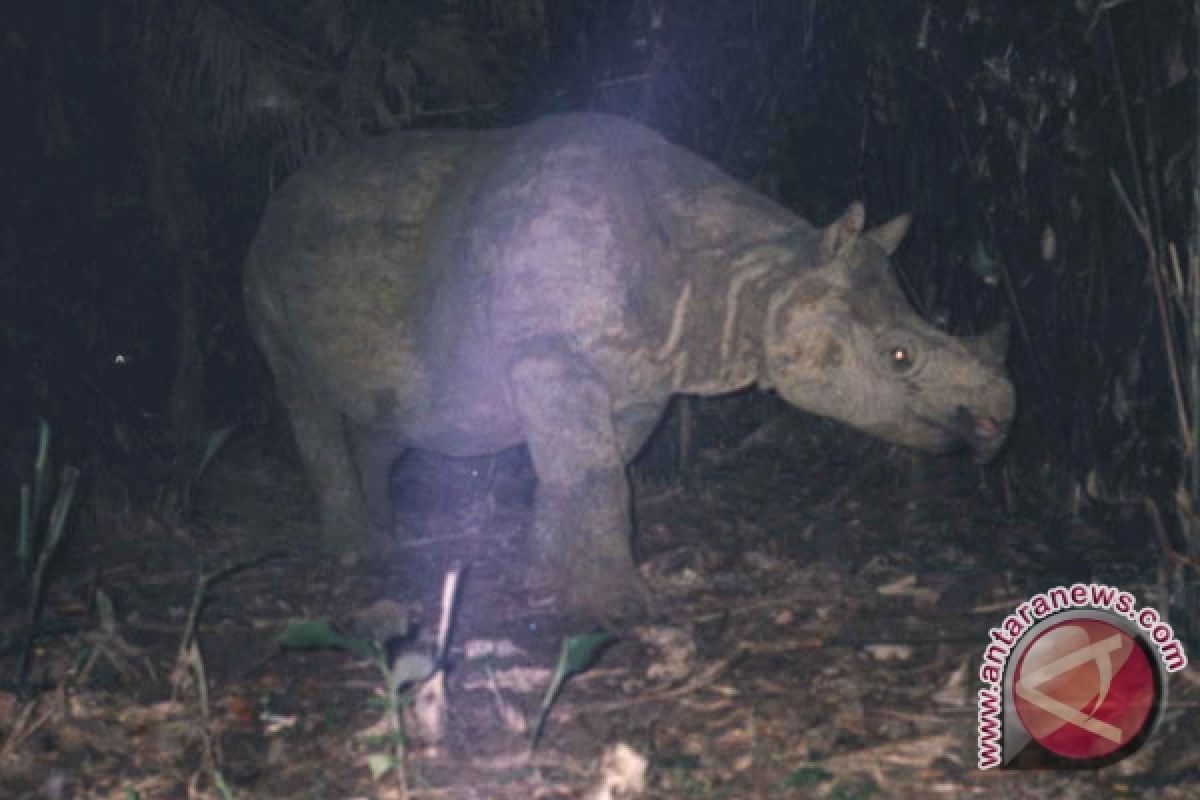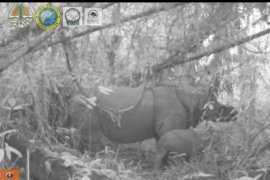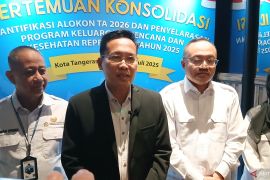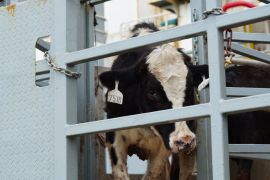WWF-Indonesia said video trap it has installed in cooperation with the Ujung Kulon National Park Authority documented two Javan rhino and their calves there. The videos recorded these endangered species activity from November to December 2010, WWF-Indonesia says in a press release to ANTARA, on Monday.
A clip from first video recorded in November 2010 showed mother and calf walking steadily to the video trap. Several more videos of this family were obtained from November to December, enabling proper and accurate identification of the calf. The calf then identified as a male Javan rhino.
On December 2010, another family successfully documented. The 30-seconds video shows a larger calf-compared to the male calf identified earlier-walked with its mother. Further identification proved that it is a female rhino, with an estimated age of 1 year old.
These findings are great news proving that Javan rhino breeds in Ujung Kulon National Park-especially after rhinos death last year.
"Video evidences showing these two calves are important discoveries as they provides us with substantial information about Javan rhino`s population dynamics in Ujung Kulon National Park," explained Head of Ujung Kulon National Park Authority, Agus Priambudi.
According to him, these calves will bring back Javan rhino population stable at 50 in Ujung Kulon NP.
"These videos also provides us with some feedbacks about Javan rhino`s survey and monitoring system and we believe this information will be important for this endangered species survival," added Agus.
Agus said that starting from February 2011, video and camera trap management will be fully conducted by Ujung Kulon National Park Authority. From 2001 to 2010 camera and video trap management were a joint-coordination between WWF-Indonesia and Ujung Kulon National Park Authority.
"WWF appreciates and ready to support camera and video trap management by the national park authority. We are more than willing to transfer survey methods and information we have to ensure effective management in the future," stated Adhi Hariyadi, Project Leader of WWF-Indonesia Ujung Kulon Program.
After successfully identified 14 rhino births within the last 10 years using camera and video trap, Javan rhino study will focus more on habit, distribution, genetic diversity, diet and nutrition, as well as about pathology and cause of stress.
"This female calf documentation is a breath of fresh air for us-and Javan rhino conservation in general-since majority of calves we identified previously was male," added Adhi.
"This is good news to ensure that the population is viable." (*)
Editor: Kunto Wibisono
Copyright © ANTARA 2011












